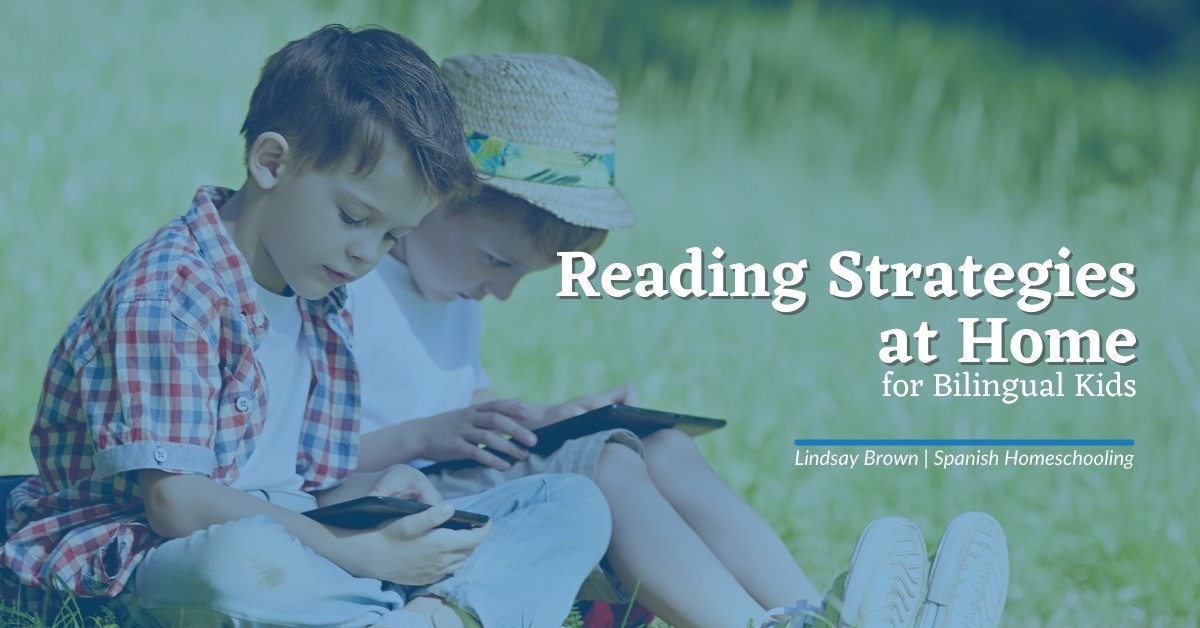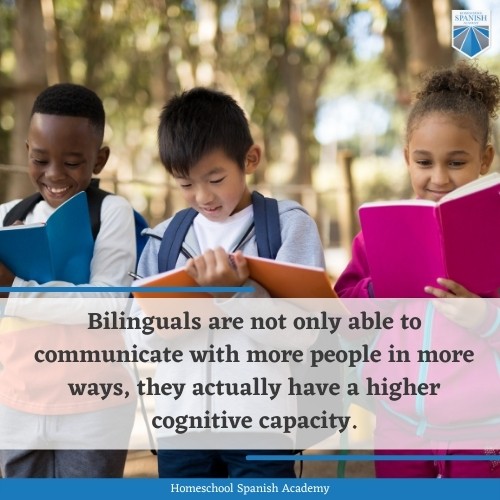
Reading Strategies at Home for Bilingual Kids
Having a bilingual child doesn’t necessarily mean you have to work doubly hard to achieve reading and writing goals. It simply means you have to be strategic about it! In many cases, it is natural for literacy skills to increase momentarily in the dominant language and falter in the other one. The ebbs and flows of fluency and literacy in each language are often a sign of progress, but it requires close monitoring by the parent. An unfortunate truth is that, without strategic biliteracy education, a child may not acquire sufficient skill to become biliterate, or capable of reading and writing in two languages. According to Liz Armstrong, a bilingual literacy intervention specialist, “when a language is learned in the absence of strong reading and writing instruction, there is a danger of bi-illiteracy or bilingualism without biliteracy.” If you are interested in guiding your child’s biliteracy toward balance, supporting their learning journey, and enhancing their reading skills, then you’ve come to the right place.
Advantages of Biliteracy
Bilinguals are not only able to communicate with more people in more ways, they actually have a higher cognitive capacity. Research studies at Texas A&M University show that bilinguals consistently outperform their monolingual peers on cognitive tasks, which include attention, memory, and organizing and processing information. By encouraging your child to learn to read in both English and Spanish, you will be significantly enhancing their verbal and non-verbal abilities. Who wouldn’t want that? The following strategies will help you support your child’s bilingual reading skills in various ways through print immersion and phonemic awareness. We also include a list of practical ways that you can implement these reading strategies at home. ¡Aprendamos a leer en inglés y español!

Print Immersion
Your child’s literacy skills benefit greatly from being surrounded by a language-rich environment. Print immersion is the experience of having reading material at one’s fingertips at all times. This includes books, magazines, and newspapers, as well as anchor charts, word walls, posters, word games, and more. Take your child to a local library and have them look for books they like in both English and Spanish. Include books specific to your child’s interests so they feel motivated to “read” through it on their own. Encourage the frequent use of all reading materials, incorporate them into the daily routine, and model for your child a high level of interest in them. As an added bonus, set up a special place as a reading corner in your home, where it’s comfortable, calm, and relaxing to spend plenty of time perusing print.
Phonemic Awareness
Without getting too heavy into reading theory, it is important to understand the basics of phonemic awareness so that you can nurture these skills with your child. Phonemic awareness is the ability to recognize the individual sounds (phonemes) in a spoken word. For example, the word “bat” divides into three phonemes: /b/ /a/ /t/ and the word gato divides into four /g/ /a/ /t/ /o/. Your child’s ability to recognize the phonemes (not identify their names, but simply recognize their existence) is a crucial first step before reading can begin. Favor daily games and activities that include listening, rhyming, and playing with syllables to promote phonemic awareness.
A Practical Guide for Both Languages
Now, we are ready to start using some practical reading strategies for English and Spanish speakers. The methods within this list are not only effective, they are fun!
Teach sounds before letter names
While the alphabet is necessary to learn, it’s not essential at first. In order to strengthen your child’s phonemic awareness, start with letter sounds not names. You can teach it A-Z or start with vowels first and move to consonants.
Use air writing
To help build long-term memory of letters, get the muscles involved! Have your child write the letter in the air with their hands, fingers, a stick or other elongated toy. Start with letters and build up to words.
Create images to match letters and sounds
Combining letters, sounds, and pictures helps form the associative link between objects and sounds. For example, while teaching the letter “S”, you draw a sun (sun, sol) and while teaching “T” you draw a turtle (turtle, tortuga). You can either teach the sounds for Spanish and English entirely separately or you can mix them.
Identify the vowel
Working with vowels, have your child identify the vowels in words before they read them. Check out our guide and video on Spanish vowels.
Let your child teach
Choose a favorite book your child has and tell them that they need to help you read. Make a mistake while you read and see if your child catches it. When they do, ask them to help you make it right!
Reader’s theater
Write out a list of 5-10 (or 15 if your child has the attention for it!) words and put them in a hat (or box). Take turns with your child pulling out a word and acting it out. This is basically charades with the added benefit that your child is reading the words on their own. Words like hop, hit, tap, ver, hola, gato, carro, etc.
Count Syllables
Play counting games with the syllables of words you’re learning. Sing the words and clap each syllable, move your body to each syllable (jump, turn, wiggle, etc.), or use an instrument to make noise for each syllable. You can focus on isolating the first syllable when you introduce the activity and then build up to finding all the syllables.
Rhyming word sorts
A word sort is a way to categorize words based on their similarities. This requires a set of words printed on small cards.
“Switch It” Spelling Activity
This activity requires a set of letters printed on small cards. Ask your child to spell a short word, like “cat” then switch out the correct letters for “cut”. Then, again, switch out the letters to make “hut,” add a letter to make “shut” and so on. For Spanish, you will focus more on syllables than on individual letters (see Spanish reading strategy below). For example, start with “do”, add letters to make “dedo”, remove letters to make, “do” again and switch it to “no”, then add letters to make “pino”, add more letters to make “pepino” and so on.
“Build It” Spelling Activity
This activity requires a set of letters in any form: printed on cards, as magnets, wooden letters, etc. Help your child to spell out words by sounding out the phonemes one by one. For pre-readers, you can lay out a small selection of letters to choose from so they don’t feel overwhelmed. Give them a chance to find the letters that match the sound of the word. When they become familiar with this activity, you can introduce images instead of saying the word. For example, the child picks the picture of a dog and says, “dog” while they sound it out and look for the letters to spell it.
Spanish Reading Strategy
A common reading strategy in Spanish instruction involves learning first to read syllables. This method starts with vowel sounds and then adds single consonants before moving into more complex sounds (like diphthongs and triphthongs). Since Spanish is a phonetic language, this method makes learning to read in Spanish much faster and more effective. An example of this is as follows:
After mastering the vowel sounds, you present a single consonant: b. You teach the child the combinations of ba, be, bi, bo, bu. Have your child write them, trace them in a loose medium (sand, dirt, flour), and even make songs with them. You can create (real or imaginary) words together and also treasure hunt for these syllables in words you find in books and other print.
English Reading Strategy
Unlike Spanish, English is not a phonetic language. This means that not every word can actually be read based on the sounds we memorize as we learn to read. Cue the entrance of sight words! Sight words are sets of words that are commonly used in English – also called high-frequency words – and must simply be memorized. Word walls, word cards, and word games are very useful tools for incorporating sight words into daily play. You can find sight word lists all over the internet, categorized by reading level, age, or grade level. An example of this is as follows:
Find a set of sight words appropriate for your child and start with 5 words. Print them out, hang them on a wall, or glue them into a book together. Read the words aloud and have your child repeat. Have them copy the word on a piece of paper, trace it in sand, and form it with playdough. Then make sure to point out the word (or ask your child to find it) each time you come across it in a book or any print you’re using. Add words as you progress and continue reinforcing the previous words.
Avid Readers Read Sooner
With these great reading strategies at your side, you are well-equipped to teach your child to read in Spanish and English. Keep in mind that the best strategy of all is to read as much and as often as possible – and to have fun while doing it. If you would like to enhance your child’s Spanish reading experience with a native Spanish speaker from Guatemala, sign up for a free trial class with Homeschool Spanish Academy!

Want more free Spanish lessons, fun content, and easy learning strategies for kids? Check these out!
- 10 Homeschooling Styles You Need to Explore in 2023
- Local Learning Networks: Finding Homeschool Co-ops Near You
- Home Sweet Classroom: Creating Engaging Spanish Lessons at Home
- 10 Websites Offering Short Stories in Spanish for Beginners
- Can Homeschoolers Participate in Sports?
- 10 Tips for When Homeschool Isn’t Working
- Is There Homeschooling in Latin America?
- 10 Productive Back-to-School Activities for Your Spanish Class
- Top-Rated Accredited Online Spanish Classes for Kids - February 22, 2023
- 6 Compelling Reasons Why Your School Should Outsource Spanish Class - February 3, 2023
- 20 Free Spanish Books, Novels, and Stories in PDF and Printables - January 25, 2023




